Results 4,651 to 4,660 of 12094
Thread: Anandtech News
-
01-14-15, 06:31 PM #4651
Anandtech: Antec CES Suite Tour
The story of Antec of the past few years has been rather curious. Five years back, it seemed like just about everyone was using Antec cases and power supplies… and then suddenly things got quiet. The company was still around, but either marketing just wasn't a focus or the increased competition from small and hungry companies pushed them out of the spotlight. I'm not privy to all the details of what may have been going on behind closed doors, but when Antec invited me to stop by during CES I was certainly curious to see what the company had to show. Most of it is what you'd expect from a company generally associated with cases and power supplies, but it will be interesting to see if they can recover any of their former glory.
Starting with cases, Antec had several designs on display. First and most impressive is the P380, their latest halo product. It has thick (4mm) aluminum wrapped around the front and top of the case, with noise reduction foam on the side panels, tool-less drive bays, a fan hub, support for multiple radiators (up to 3x120mm on the front and top), and basically every other high-end feature you care to name. It drops most support for optical drives, though there is room for a slim ODD option. It includes three 120mm fans with mounts for four more. This is intended to carry the torch from the P180, which is still well regarded years after launch, with a price to match. It should retail for $249 with availability expected in March.
Next up is the ISK600M, a recently launched Micro-ATX/Mini-ITX "cubic" case that's basically the upsized version of the Mini-ITX ISK600. It comes with top and bottom internal compartments to separate the PSU and drives from the motherboard and expansion cards. The power supply goes on the bottom and the case has support for three 3.5" drives, three 2.5" drives, and there's a slim ODD bay as well at the top (which could also be used as a fourth 2.5" bay). The top portion houses the motherboard and expansion cards with four expansion slots. Cooling is provided by up to four fans (120mm on the rear, an optional 80mm on the rear, a 140mm intake at the front, or the front fan can be replaced with an optional 2x120mm configuration). The case measures 273mm x 340mm x 290mm (WxDxH), with clean and minimalist styling that should stand the test of time. I've seen reviews of the case mostly from European sites and I can't seem to find any major resellers in the US, but hopefully that will change in the near future. I expect the price to be around $80-$90, or about $20 more than the ISK600 (which is available for $60 online).
Next up, the P50 is similar in some ways to the ISK600M but with vertically split compartments – or if you prefer, it looks a lot like the Corsair Carbide Air 240. This is designed to be more of a budget-friendly Micro-ATX/Mini-ITX case and it uses slightly downgraded materials (e.g. plastic front fascia and thinner metal sides). It can fit two 2.5" drives, three 3.5" drives, and a 5.25" external bay is available. The P50 includes three 120mm fans and has eight total fan mounts, with room for two 2x120mm radiators.
Moving on, P70 has nothing really in common with the P50; where the P50 is like a budget friendly version of the ISK600M, the P70 is a standard ATX tower. It has support for up to ten drives total; there are 2 x 5.25" and 1 x 3.5" external bays and 4 x 3.5" and 1 x 2.5" internal bays; I believe you can put four 2.5" drives in place of the two 5.25" bays. The case is designed to reduce noise with polycarbonate layers on the side panels, and it includes three 120mm fans with two optional 120mm fan mounts available. Liquid cooling and radiators are also supported on the top and back, and the price point of $70 targets the mainstream market.
Moving on to power supplies, there wasn't too much to discuss. Their EarthWatts series has done well, as has the BP series (Basic Power), and they've found that they can essentially keep the efficiency and even improve some of the components while dropping the price. To that end, there will be new BPxxxS models coming out at the lower end of the pricing spectrum. At the high end, the Edge line is their top performing PSU with 80 Plus Gold and much higher price points.
Finally, Antec was showing their Xbox One cooler, conveniently named the X-1 Cooler, with an integrated LED display showing the intake and exhaust temperatures. Note that the green lighting effects in the pictures are not part of the retail product, thankfully, as it's a bit bright. The X-1 is already available at Antec's store, with a price of $29.99, and it reportedly cools the Xbox One by up to 30%. It also senses the temperature of the Xbox One and only turns on the fan when the temperatures are above 30C.
Gallery: Antec CES Suite Tour_thumb.jpg)
_thumb.jpg)
_thumb.jpg)
_thumb.jpg)
_thumb.jpg)
_thumb.jpg)
More...
-
01-14-15, 06:31 PM #4652
Anandtech: QNAP Releases Haswell-based TVS-x71 and Cortex-A15-based TS-x31+ NAS Lineu
QNAP took the SMB / SOHO NAS market segment by storm with a host of CES announcements. The release of the AMD G-series SoC-based TVS-x63 was undoubtedly QNAP's major announcement at the show. Though we didn't specifically mention it in our initial coverage, QNAP tags the members of that lineup with the 'Golden Cloud' moniker. Keeping with the theme, two other new high-performance product lineups got a similar treatment
- Thunder Cloud - Haswell Pentium/Core-based TVS-x71 Series
- Edge Cloud - Haswell Core/Xeon-based TVS-ECx80 Series
In addition to the above two, QNAP also launched the TS-x31+ series, based on an Annapurna Labs SoC. Without further digression, let us get into the details of each of the lineups.
TVS-x71
COTS NAS vendors usually try to keep the breadth of hardware offerings to a minimum. We often see a lineup differentiating only on the basis of number of bays, with the core platform remaining a constant. On the x86 front, particularly, vendors usually have an Atom-based model. The next step up is usually a Pentium or a Core i3-based unit. Consumers wanting a bit more CPU horsepower have no option but to shell out for a Xeon-based unit beyond that.
QNAP is aiming to fill this glaring hole in the market (not only in their own product stack, but also every other COTS NAS vendor) by populating the TVS-x71 series with processors ranging from a Pentium G3250 to a Core i7-4790S. The table below summarizes the various models in the lineup.
I am particularly excited by the 8-bay models with powerful quad-core processors. I am currently putting the QNAP TS-853 Pro through long term testing by running two virtual machines on it while using it as a media file server. Often, I have seen heavy activity in the VMs choke up the media serving capabilities (partially my fault for allocating two cores to each of the VMs, leaving very few CPU cycles for the primary functionality). Using a 4C/8T processor such as the Core i7-4790S ought to make scenarios such as the one I am testing out a walk in the park for the relevant unit.
All the Haswell models used in the TVS-x71 have an integrated Quick Sync engine and support VT-x. Full 4K decode and display is supported. All the Core-series CPUs used in the lineup also support AES-NI. So, other than the Pentium-based models, we should have hardware acceleration for encrypted volumes. Real-time transcoding for media serving is also available, as are the other QTS features that made the TS-x51 and TS-x53 Pro lineups stand out of the crowd. We don't have any official pricing information for the TVS-x71 series yet, but hope that the highest end model can come in at less than $2000.
TVS-ECx80
QNAP had the 10-bay version (TVS-EC1080+) on display at their suite. The unit comes with a Xeon E3-1245 v3 processor and has 32 GB of ECC DDR3 memory. There are two mSATA ports populated with 128 GB mSATA modules for use with QTS's SSD caching feature. This leaves all 10 bays available for primary storage. A PCIe card with two 10GbE ports is preinstalled and there are four native GbE ports on the motherboard. This tower unit targets enterprise customers and is priced at $3300.
The non '+' models don't have a pre-installed 10G PCIe card, and they come in 8- and 10-bay varieties with either the same Xeon processor or a Core i3-processor.
TS-x31+
I tweeted right after getting back from CES that Annapurna Labs was the surprise package of CES for those following the NAS platform vendors. Marvell seems to be taking things a bit too easy, opening up the doors for the startup to force its way into the market. Readers looking for information on Annapurna Labs would do well to peruse the Platform Details section in our piece covering the launch of the Synology DS2015xs.
Unlike Synology, QNAP has decided to use an Annapurna Labs SoC without the integrated 10G ports. We have two Cortex-A15 cores running at 1.4 GHz in the 28nm SoC that is part of the TS-231+ and TS-431+. The SoC also has two native GbE ports with enough performance for full-scale link aggregation.
QNAP quotes transfer rates in the 200 MBps range for the TS-x31+ models. Marvell now seems relegated to the very low-end models such as the TS-x12P. Even Freescale has overtaken them with a dual-core Cortex-A9 platform in the TS-x31 series.
At the CES suite, QNAP also talked about an upcoming low-cost Bay Trail-based two-bay model without hot-swap support. We believe it will be used to address cost-sensitive markets and is unlikely to make it to the USA and EU. QNAP also updated us on their home automation initiative. Other than the publicly announced partners, QNAP is also attempting to act as a hub / one-stop interface for the multitude of home automation / security devices out in the market. Obviously, a good and consistent experience with any QPKG in this domain relies heavily on the said devices having open APIs and willing to be controlled locally. QNAP hopes to have something more concrete for announcement sometime in the later half of this year.
All in all, QNAP had a very busy CES, and, to be frank, we were overwhelmed (in a good way) by the number of announcements. In terms of sheer number of features available, QTS is well ahead of the rest of the COTS NAS OSs - they have the lead in hardware-accelerated media transcoding and creating a stable front-end for QEMU with the Virtualization Station package. However, the overall QTS user experience could do with some improvement. In addition, the challenge for QNAP will be to maintain a cohesive strategy moving forward and keep up with the need to maintain and support a wide variety of hardware platforms.
More...
-
01-14-15, 07:30 PM #4653
Anandtech: Microsoft Launches Two Additional Low Cost Lumia Smartphones
The Lumia brand has a couple of new additions to compliment the already dizzying array of devices launched in the last year. Those waiting for a new flagship to replace the Lumia 930 will have to wait a bit longer though, as this time it is yet another two low cost devices. The feature set of which device has what is getting fairly complicated, and Microsoft does not seem to have a steady progression of features from lower numbered phones to the higher ones anymore, so we will go through these two new devices and see where they fit in the Lumia stack.
The first device is the 4” Lumia 435. This is the first Lumia device with a dual-core processor since the Snapdragon S4 powered devices in 2012/2013. In this case, it is the Snapdragon 200 with dual Cortex A7 processors at 1.2 GHz. The goal of this new device seems to be to hit an even lower price point than the 5xx series of phones, so the even lower powered SoC is not a surprise. Graphics are likely the same as the 5xx series with Adreno 302 to drive the 800x480 display. The 435 does come with 1 GB of memory now, so it appears that at least for Lumia phones, 512 MB options will no longer be released which is a good thing. Storage is 8 GB of NAND, plus microSD expansion up to an additional 128 GB. The camera is especially poor on this phone though, with just a 2 MP fixed focus 1/5 inch sensor with f/2.7 aperture. It does come with a front facing camera, although it is a mere 0.3 MP VGA sensor. Although the battery is small at 1560 mAh, it does have 3.8 V chemistry and a claimed battery life of 9.4 hours of Wi-Fi browsing. The 435 comes in green, orange, white, or black with a MSRP of 69 euros. Availability will be in February in “select” countries in Europe, Asia-Pacific, India, the Middle East, and Africa.
Nokia Lumia 435 SoC MSM8210 1.2 GHz dual-core Cortex A7 Snapdragon 200 RAM/NAND 1 GB LPDDR2, 8 GB NAND + microSD Display 4.0” 800x480 LCD Network GSM/WCDMA up to 42.2 Mbps Dimensions 118.1 x 64.7 x 11.7 (mm) Weight 134.1 grams Camera 2MP rear camera, fixed focus, 1/5" CMOS size, F/2.7 No Flash, VGA FFC Battery 1560 mAh 3.8 V (5.928 Whr) OS Windows Phone 8.1 with Denim Firmware Connectivity 802.11 b/g/n + BT 4.0, USB2.0, MPT, DLNA, FM Radio Location Technologies Cellular and Wi-Fi network positioning, A-GPS SIM Size MicroSIM (Dual SIM Optional)
The next variant is the Lumia 532, which also has a 4” display and the same resolution at 800x480. This is a spec bump over the original 530, with the same quad-core Snapdragon 200 (4xCortex A7 @ 1.2 GHz) but with 1 GB of memory and 8 GB of NAND with microSD expansion up to 128 GB. The original 530 came with just 512 MB of RAM and 4 GB of NAND, both of which are fairly inadequate. The 532 comes with a 5.0 MP fixed focus 1/4 inch camera with f/2.4 aperture. The front facing camera is the same 0.3 MP unit as the 435 with VGA resolution video. The interesting thing on the 532 though is the inclusion of the Glance screen, which is easily my favorite feature on Lumia phones, and has been mostly absent from this year’s lineup with just the Lumia 830 sporting glance for any of the phones released in the last year. This makes it an easy win over the Lumia 530. Colors are once again, orange, green, white, and black, and prices start at 79 euros MSRP and similar availability to the 435.
While neither of these phones are especially exciting, Microsoft has clearly seen some traction at the low end of the market and they continue to create devices for each market price and segment they are competing in.Nokia Lumia 532 SoC MSM8212 1.2 GHz quad-core Cortex A7 Snapdragon 200 RAM/NAND 1 GB LPDDR2, 8 GB NAND + microSD Display 4.0” 800x480 LCD with Glance Screen Network GSM/WCDMA up to 42.2 Mbps Dimensions 118.9 x 65.5 x 11.6 (mm) Weight 136.3 grams Camera 5MP rear camera, fixed focus, 1/4" CMOS size, F/2.4 No Flash, VGA FFC Battery 1560 mAh 3.8 V (5.928 Whr) OS Windows Phone 8.1 with Denim Firmware Connectivity 802.11 b/g/n + BT 4.0, USB2.0, MPT, DLNA, FM Radio Location Technologies Cellular and Wi-Fi network positioning, A-GPS, A-GLONASS SIM Size MicroSIM (Dual SIM Optional)
The biggest problem though is that they now have a huge number of devices offered, and unfortunately, a very strange feature list. It seems almost random at this point which phone will have which features, and there is no progression through the product range where lower models are a subset of features of their higher priced brethren. Take for example the Lumia 930, which is the current flagship, but has no Glance screen support, but the Lumia 830 and 532 do have Glance support. The Lumia 730/735 have a higher resolution front facing camera, as does the Lumia 535, but the Lumia 830 has a standard front facing camera. The Lumia 630 is missing things like 1 GB of RAM and an ambient light sensor that less expensive models do have.
While I appreciate that Microsoft is creating models for each market they are going after, they seem to be losing some sort of coherency to their naming standards and feature lists. To avoid customer confusion, this is something that is fairly important.
The Lumia brand is new to Microsoft, so we are not sure which of these models were in the Nokia pipeline and have been altered, so it may take a year or so to sort out the basic feature sets. But for now, it is getting a bit confusing.
For those waiting for a higher end Lumia to finally come out of Microsoft, perhaps we may have to wait for Mobile World Congress to get any ideas about that. Stay tuned!
Source: Windows Blog
More...
-
01-14-15, 07:30 PM #4654
Anandtech: Monoprice at CES: 30-inch IPS with "Guaranteed" 120Hz and a Mechanical RGB
Over the past year or two one of the hot subjects with displays among enthusiasts has been overclocking them to drive the panel at higher refresh rates. We've seen this mostly from the Korean 27" QHD imports, and the amount you could overclock the panel was often quite variable. Monoprice has begun offering displays as well, which gives you better support options than importing something from overseas, and now they're taking it a step further with a 30" IPS display that they're saying they'll guarantee will run at 120Hz 2560x1600.
Now, just refreshing at 120Hz doesn't solve all the issues you might encounter – e.g. image persistence between frames – but given these IPS panels are supposed to have a 6ms response time (which is more marketing than fact) driving them at up to 167Hz is possible. Even if there's a bit of smearing between frames, I still think having a 120Hz display is a much better experience than the 60Hz we've had to accept for years now. It will also be interesting to see how well the display actually works with a variety of GPUs – I suspect some GPUs might struggle to send a clear signal but we'll see. There's no specific release date yet, but Monoprice says the display should be out in the next couple of months.
Monoprice had plenty of other items on display, but most of those (speakers, power banks, cables, etc.) aren't something we cover much at AnandTech. However, they did have a mechanical keyboard with the new Kailh RGB switches, with programmable per-key backlighting. Or at least, that's the end goal – I'm not sure the software support for programming the backlighting is there yet. Anyway, the effects that you can make with these per-key RGB LED keyboards are really cool initially, but I don't know how practical they'll be for everyday use. I suspect most users will just settle for a uniform color, but enthusiasts will enjoy the customization options. I saw several other keyboards with Kailh RGB LED switches at CES, most with software that's nearly ready for release, so it will be interesting to see how pricing and features pan out.
Gallery: Monoprice at CES: 30-inch IPS with "Guaranteed" 120Hz and a Mechanical RGB Keyboard_thumb.jpg)
_thumb.jpg)
_thumb.jpg)
More...
-
01-14-15, 08:01 PM #4655
Anandtech: SteelSeries CES: APEX M800 QS1 Mechanical Switch and Sentry Eye Tracker
SteelSeries is best known for their keyboards, with MSI using SteelSeries designed keyboards in their gaming laptops for quite a few years now. They have a variety of other peripherals as well, including mice, surfaces, headsets, and various gaming controllers. Focusing on just keyboards for a moment, they have two product lines, the G-LINE features mechanical Cherry MX switches while the APEX line is for users that prefer membrane switches. (Yes, apparently such people do exist.) Here's where things get interesting.
At CES, SteelSeries was showing off a new mechanical switch that they worked with Kailh to design. They're calling this the Linear QS1 switch, and it's completely different from existing mechanical switches as far as I can tell. It features 3mm travel with a 1.5mm actuation point, 45cN force, and it's rated for 60 million actuations. That's nothing particularly new for mechanical switches, but what sets the QS1 apart from other switches is the feel. Basically, SteelSeries set out to create a new switch that would feel more like a membrane switch, but it would keep the longevity and durability properties of a mechanical switch. That switch is the Linear QS1, and it will be showing up in the new APEX M800 keyboard.
The switch also features full RGB LED lighting and the M800 will have per-key programmable lighting and effects available via software. Unlike some other companies (e.g. Monoprice and Rosewill), SteelSeries already has a lot of experience with creating software for controlling keyboard backlighting, macros, etc. so this is a natural fit for them. The M800 has macro support as well as anti-ghosting with 256-key rollover. (Why 256 when there are only 110 or so keys? Probably because they used eight bits for monitoring the rollover state as there was no benefit to only using seven bits.)
As far as the performance of the QS1 switch, SteelSeries says it's "built for speed" and will target gamers. I'm probably not skilled enough at any games these days to notice the difference, but typing on the keyboard felt good. Keyboards are inherently highly subjective, so it's impossible to declare one type of switch as being universally superior, which means the QS1 is really just one more option – albeit a SteelSeries exclusive. Pricing is currently targeting $199 MSRP, with availability sometime in the coming months.
The other product SteelSeries was demonstrating is their Sentry Eye Tracker that mounts to the bottom of your display. With their software the Sentry allows is the creation of an overlay in game streaming that shows where the user is looking on the screen. They had some recorded videos showing some top professional gamers using Sentry, and it was interesting to see exactly where on the screen they were looking during a match. SteelSeries also mentioned that the Sentry tracks statistics for supported games – e.g. how much time the user spent looking at the mini-map in DOTA2 or StarCraft II – and that some of the pro-gamers have used that to improve how they play, working to train themselves to not waste time looking at their cool-down bar but instead getting a better sense for how long it takes for an ability to recharge.
Anyway, it's not something I would use, but when watching a game stream it does actually create a more interesting feed (assuming it's used properly). The Sentry Eye Tracker is available already with an MSRP of $199, so it doesn't come cheap, but it could be used in other ways as well – e.g. controlling the mouse cursor with your eyes (which is really where the technology came from in the first place).
Gallery: SteelSeries CES: APEX M800 QS1 Mechanical Switch and Sentry Eye Tracker_thumb.jpg)
_thumb.jpg)
_thumb.jpg)
_thumb.jpg)
_thumb.jpg)
More...
-
01-14-15, 11:00 PM #4656
Anandtech: TRENDnet's Networking Solutions at CES 2015
We made our annual customary visit to TRENDnet's suite at CES 2015. Just like last year, TRENDnet has put faith in the latest chipsets from Qualcomm Atheros, be it in the wireless networking front or powerline communication. Similar to TP-LINK's Archer C10, we have a AC2600 router in the form of the TEW-827DRU. It uses the QCA9980 - we get 4x4 MU-MIMO with 1733 Mbps in the 5 GHz band and 800 Mbps in the 2.4 GHz band. Four GbE LAN ports and one GbE WAN port make up the wired connections. The model also comes with detachable antennas and two USB 3.0 ports. The unit is expected to come to the market in May 2015 with a MSRP of $280.
TRENDnet has also decided to join the Broadcom XStream bandwagon with a AC3200 router, but, similar to TP-LINK's situation, the usage of that model as a flagship should be quite short-lived.
On the powerline front, TRENDnet has opted for QCA's HomePlug AV2 solution for the Powerline 1200 family. This has two members, the TPL-420E2K and TPL-421E2K. The latter has pass-through outlets.
The product line I came away most impressed with was the home control portfolio. In early December 2014, TRENDnet had launched the THA-101, a smart switch that could also act as a 300 Mbps 802.11n wireless extender (a differentiation point compared to the D-Link Smart Plug and Belkin WeMo). It is currently available for $55 on Amazon.
At CES, the added two new smart outlets - one communicating via powerline and the other having the ability to act as an extender for 802.11ac networks (single spatial stream only). The former is the THA-102PLK - a kit which also includes a powerline adapter for connecting to a router on one end. It will reach the market in April with a MSRP of $105. The AC extender / smart switch is the THA-103AC which will come to market in March 2015 for $80.
All the smart switches are controllable via free mobile apps (iOS / Android). It is also possible to set basic schedules and monitor power / energy consumption. One of the key selling points, in my opinion, is the fact that it can be fully controlled via a web browser. My understanding is that it is a open product. Though no public APIs are available, it shouldn't be too difficult to control the unit via custom scripts, given that it can be controlled via a web browser. We are planning to request TRENDnet for a sample in order to see how it compares to the UFO Power Center and the Ubiquiti Networks mPower Wi-Fi power strip.
More...
-
01-15-15, 02:30 AM #4657
Anandtech: Plextor Releases M6e Black Edition PCIe SSD, Shows Off Upcoming M7e PCIe S
Continuing with our CES SSD coverage, Plextor released a new M6e Black Edition PCIe SSD at the show. Unfortunately, the Black Edition offers nothing new in terms of the hardware or firmware design and it's merely a normal M6e with fancy black 'n red heat sinks. The controller is the same Marvell 88SS9183, which is a PCIe 2.0 x2 design without NVMe support, and the controller is coupled with Toshiba's 19nm MLC NAND. Performance is rated at 770MB/s sequential read and 625MB/s sequential write with up to 105K random read and 100K random write IOPS, similar to the original M6e. I can see the reasoning behind the Black Edition since the M6e was a very plain green PCB design and especially gamers with side window cases will appreciate the new design, but otherwise the Black Edition doesn't bring anything new to the market.
The drive will be available later in Q1'15 and will be sold exclusively through NewEgg. Pricing is about $1 per gigabyte for the 128GB model and the larger capacities will be somewhat more cost efficient (exact pricing is to be announced). We never got around to review the original M6e due to some testbed issues, but I now have a new testbed and all capacities of the M6e Black Edition, so stay tuned for the full review (you may even get a sneak peek of our new 2015 Client SSD Suite).
Along with the M6e Black Edition, Plextor is also releasing a 2.0 version of PlexTurbo. The software is similar to Samsung's RAPID in the sense that it uses system RAM to cache IOs and boost performance. The 2.0 version brings increased RAM allocation (25% or up to 4GB) in addition to better optimized caching algorithm that provides even higher performance. I'll also be taking a look at the PlextTurbo software in the upcoming M6e Black Edition review.
Moving on to upcoming releases, Plextor also demonstrated the successor of the M6e i.e. the M7e. The biggest change is the new controller (Marvell 88SS9283), which doubles the amount of PCIe lanes to four, but it's still a PCIe 2.0 design that relies on AHCI (i.e. no NVMe).
Performance wise the M7e presents nearly 100% improvement, at least in sequential speeds. The drive is still in development, so there aren't any finalized specifications yet, but the drive should be available in H1'15.
Lite-on, Plextor's parent company, had the enterprise version of the M7e called the EP1 in the suite. The controller is the same Marvell 88SS9283, but the drive has capacitors for power-loss protection and the firmware has also been optimized for enterprise workloads (i.e. more emphasis on consistency rather than peak performance). 480GB and 960GB capacity options are available in M.2 22110 form factor with performance being up to 1.5GB/s read and 1.2GB/s write.
Plextor/Lite-on has been developing a TLC NAND based SSD for quite some time now and the release is nearing every day. Dubbed as the M6V, the drive will utilize Marvell's new 88SS1074 controller with LDPC error correction for increased endurance.
The NAND will be Toshiba's A19nm TLC. The schedule is still a bit open from what I heard, but the drive should make an entry to the market around mid-2015 timeframe.
More...
-
01-15-15, 03:30 AM #4658
Anandtech: Samsung Displays New 3D V-NAND Based Enterprise SSDs at CES 2015
Along with the release of the SM951 PCIe SSD, Samsung had several new enterprise SSDs on display at the show. The PM863 and SM863 are SATA 6Gbps drives and pack a new Mercury controller (unfortunately I don't have any specifics at this point), but what's intriguing is the available capacities. The PM863 with 32-layer 128Gbit TLC NAND comes in up to 3.84TB capacity in 2.5" form factor, whereas the SM863 with 32-layer 86Gbit MLC NAND offers a half of that (i.e. 1.92TB). Sustained 4KB random write performance is a decent 15K IOPS for the PM863 and 20K for the SM863, but there is no word about endurance at this point.
In addition to SATA drives, Samsung showed off three new SAS drives with new REX controller and 3D V-NAND. Capacities are once again impressive with the PM1633 packing up to 3.84TB in 2.5" and thanks to the SAS 12Gbps interface sequential performance is doubled compared to the SATA 6Gbps drives.
And lastly, Samsung also displayed the enterprise version of the SM951 i.e. the SM953. The change compared to the SM951 is M.2 22110 form factor to fit the capacitor on the PCB for power-loss protection, but otherwise the SM953 shares the same core hardware. The firmware is obviously enterprise-oriented with focus on sustained figures, hence the slightly lower performance specs.
More...
-
01-15-15, 04:01 AM #4659
Anandtech: More DDR4-3400: G.Skill’s 4x4GB CL 16 Kit Released
When we look at the history of DDR3, a number of key advertising points were consistent across most of the memory manufacturers. First was high speed in terms of out of the box, and the other was high speed from overclocking. The big names all went for these records, and after we posted about Corsair’s DDR4-3400 kit a couple of days ago, G.Skill is also jumping onto the bandwagon. However, the kit is very slightly different – G.Skill is supporting 16-16-16-36 timings, compared to Corsair’s 16-18-18-40. Whether that means much in real-world usage is hard to say, but I would imagine G.Skill, given the history between the two, will also compete on price. So perhaps under $1000, which would be a big hit in anyone's build.
This 4x4 GB kit will also be flanked by a new DDR4-3200 4x4 GB kit, available at 15-15-15-35 timings, which also undercuts the competition. Both of the new kits from G.Skill are validated on the GIGABYTE X99-SOC Champion and the ASUS Rampage V Extreme.
The kits will also come with G.Skill’s Turbulence III fans to provide extra cooling. There is no date currently mentioned by G.Skill, but 'released' often means 'heading to distributors'. Given the high specifications of the kit, I would imagine only a handful are actually going on sale.
We still have a round-up of DDR4 memory kits planned in the works, from 2133 to 3200 (perhaps 3400 if we can get them), so stay tuned for that.
Source: G.Skill
Gallery: More DDR4-3400: G.Skill’s 4x4GB CL 16 Kit Released_thumb.png)

More...
-
01-15-15, 05:32 AM #4660
Anandtech: Netgear Launches ARM Cortex-A15-based ReadyNAS 200 Series
Netgear's major announcement at CES 2015 was the ReadyNAS 200 series of NAS units targeting the SOHO market and power users. This lineup has two members, a 2-bay RN202 and a 4-bay RN204. The ReadyNAS 200 series is based on a dual-core Cortex-A15 SoC from Annapurna Labs. The system has 2 GB of RAM and two GbE ports. 802.3ad dynamic link aggregation is supported, and transfer rates of around 200 MBps are possible (similar to what QNAP claims for their TS-x31+ series). The units run ReadyNAS OS 6.2 and have a MSRP of $360 and $500 for the 2-bay and 4-bay variants.
As I mentioned in our COTS NAS buyer's guide last month, Netgear's ReadyNAS OS 6.x is quite interesting because of the choice of a btrfs file system. We also get snapshots with minimal overhead (due to the COW - Copy on Write - nature of the file system) and protection against bit-rot. The ReadyNAS 200 series provides a powerful, yet affordable alternative to the ReadyNAS 300 and ReadyNAS 500 series of NAS units.
At the show, Netgear also launched the AirCard, a battery-powered 4G hotspot device connecting to the Sprint network. The $200 price also includes 1 GB of data, with the option to purchase more further down the road. In the ProSAFE lineup, we also got Click Switches - 8- and 16- port GbE unmanaged switches with USB charging ports. The focus of the product is on ease of use and versatility. On the powerline networking front, Netgear had their HomePlug AV2 PL1200 and PLP1200 devices on display.
Netgear decided to hold off on any major router announcements at CES. Most of the other networking vendors announcing flagship products were planning to ship in Q2 or later. This obviously points to the hardware platforms not being ready. It does make plenty of sense for Netgear to announce products closer to their release dates. In addition, they got in first on the Broadcom XStream platform with the Nighthawk X6 R8000 and second on the 4x4 MU-MIMO Quantenna solution (after Asus) with the Nighthawk X4 R7500. They have both flagships currently in the market. The focus at CES was more on the software updates (such as ReadyCLOUD integration, configurable power output for the Wi-Fi radios etc.) that Negear had in the pipeline for the R7000 platform.
That said, they did show off a Nighthawk AC1900 range extender - basically, the same internal hardware as the R7000, but, without routing support, and priced a good $30 cheaper.
More...
Thread Information
Users Browsing this Thread
There are currently 23 users browsing this thread. (0 members and 23 guests)




_575px.jpg)

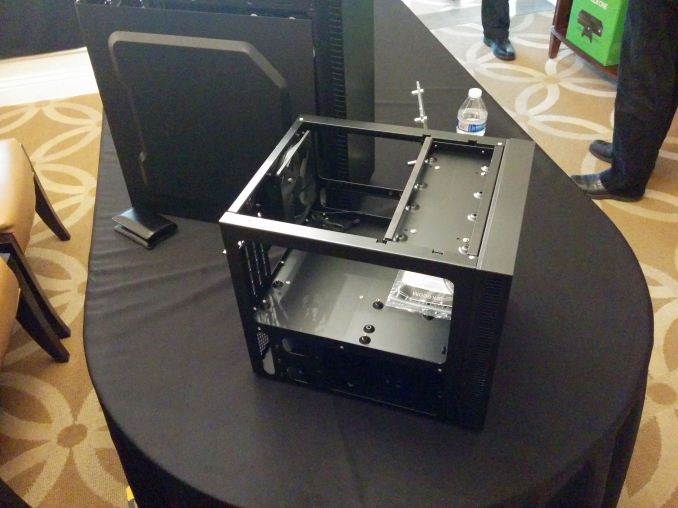
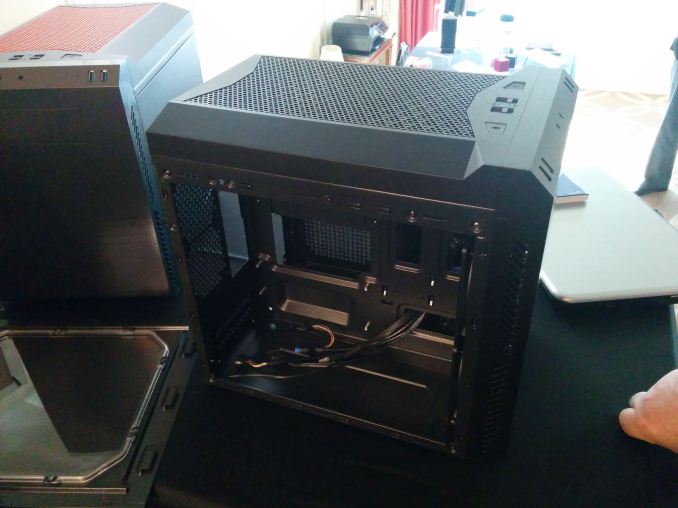

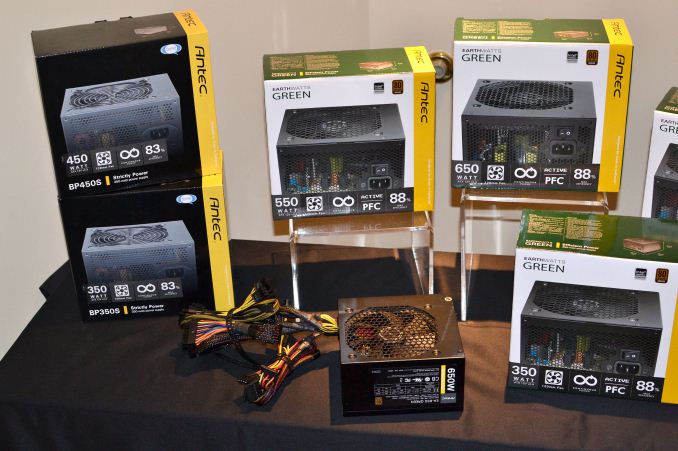


 Quote
Quote
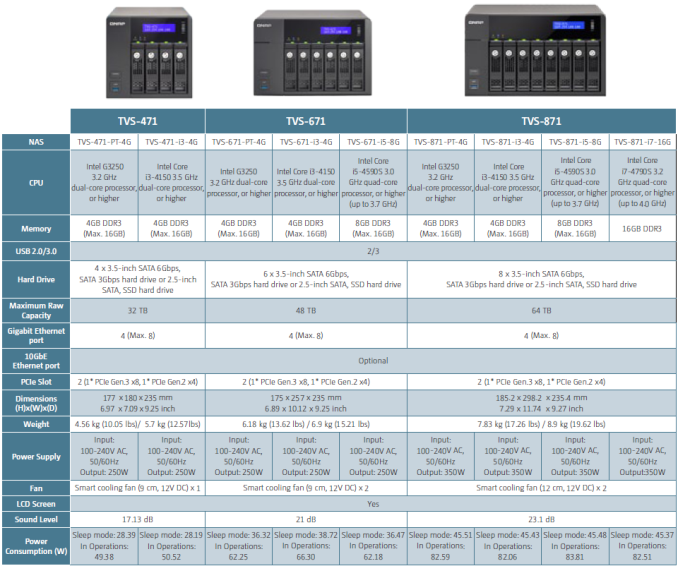
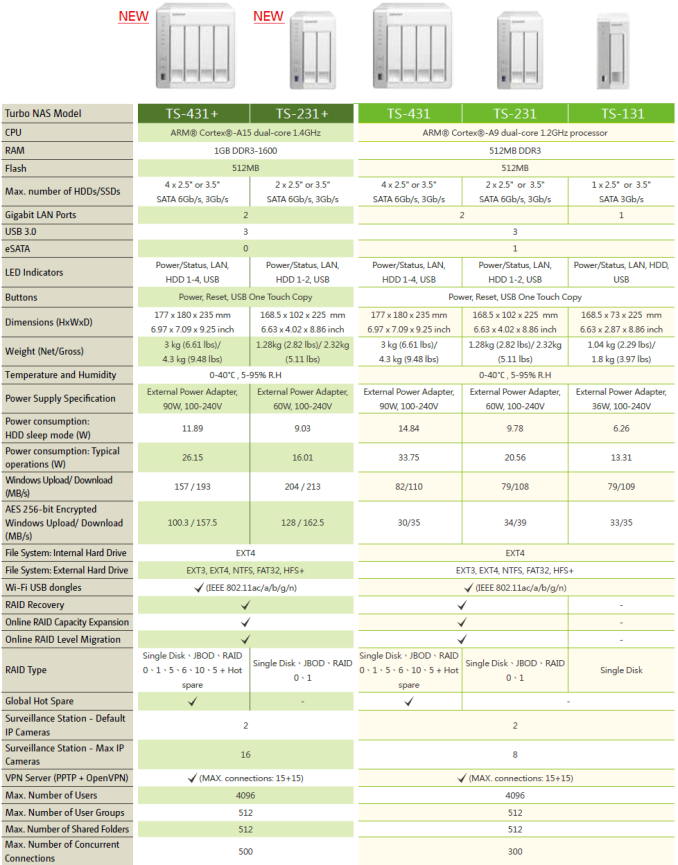
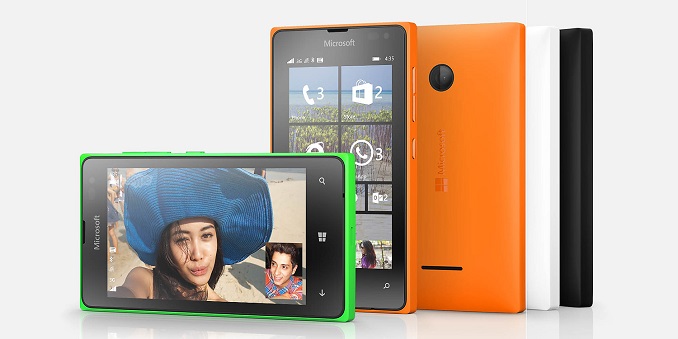


_575px.jpg)
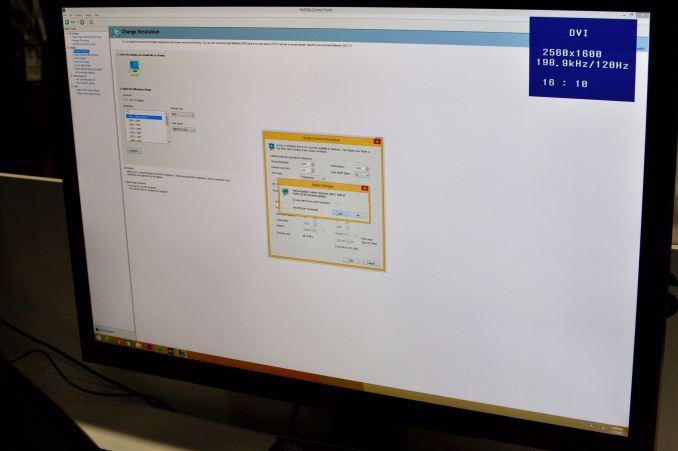
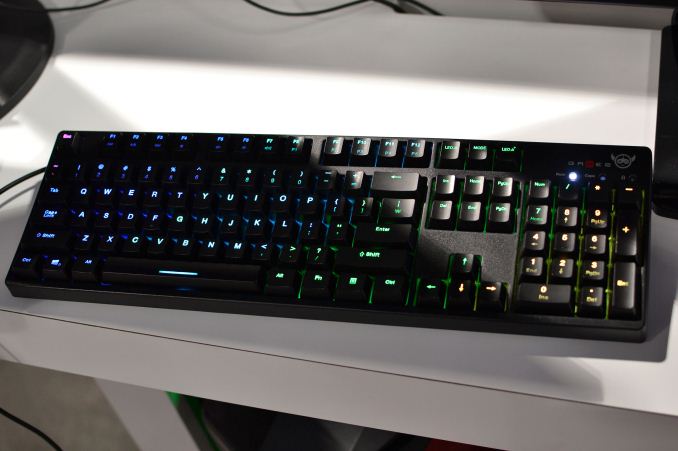
_575px.jpg)



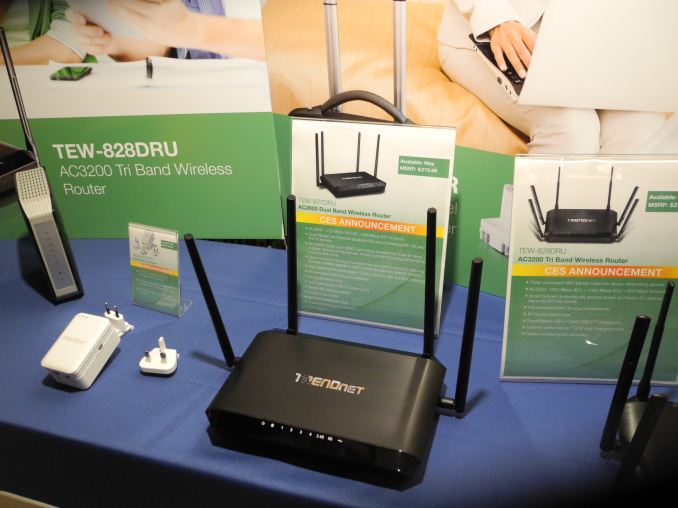
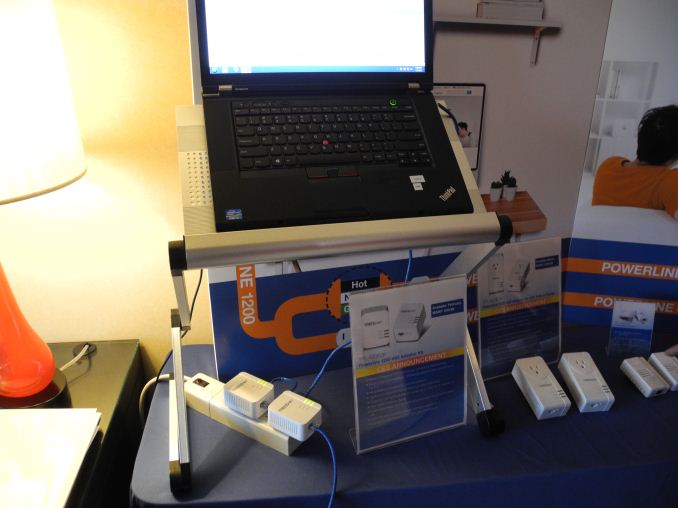
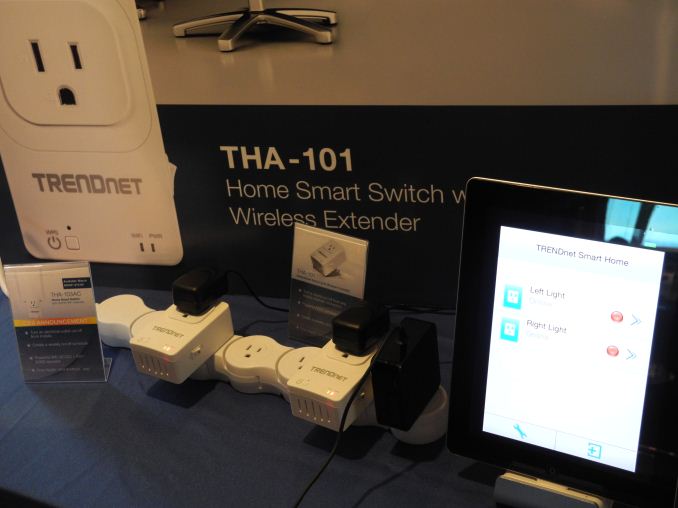










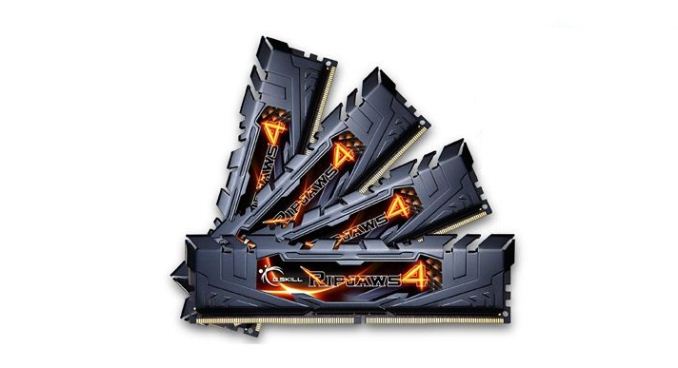



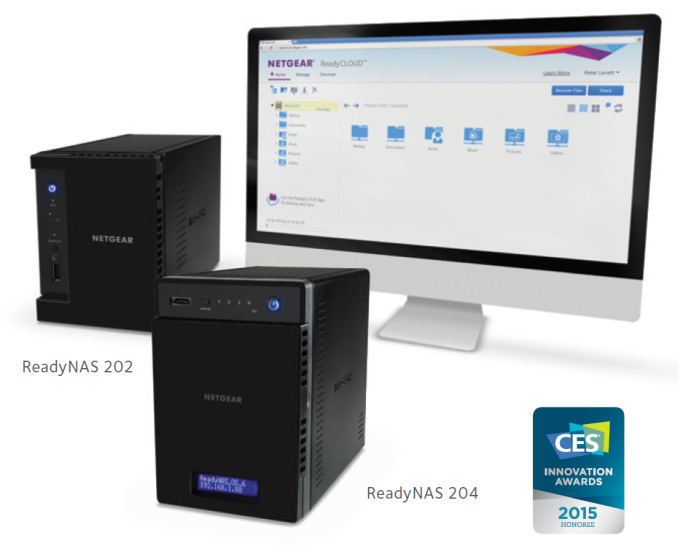
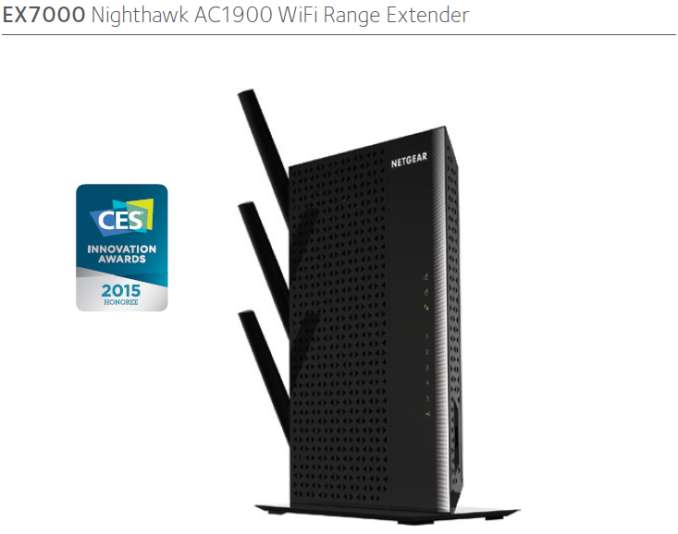
















Bookmarks